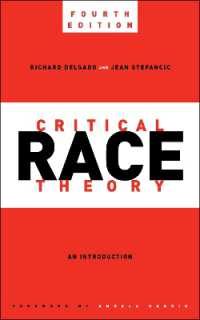- ホーム
- > 洋書
- > 英文書
- > Computer / General
Full Description
This book is the outcome of a NATO Advanced Study Institute on Pattern Recog nition Theory and Applications held in Spa-Balmoral, Belgium, in June 1986. This Institute was the third of a series which started in 1975 in Bandol, France, at the initia tive of Professors K.






